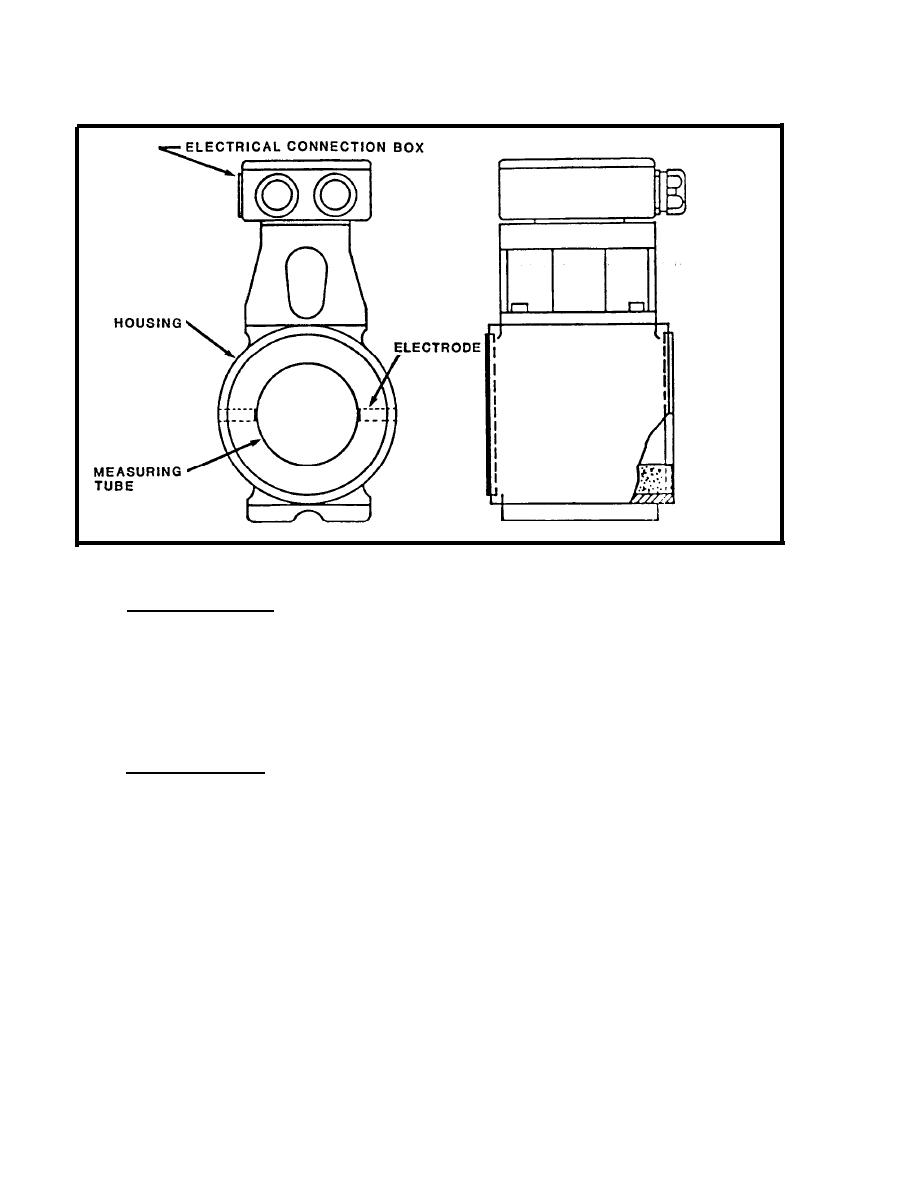

Custom Search
|
|

|
||
 FIGURE 6-9.
Full-Bore Electromagnetic Meter
2.1 Full-Bore Meters. The full-bore electromagnetic flowmeter (Figure 6-9)
is an inline device with an inside diameter identical to the system. It is
inserted between two flanges. These meters offer the same resistance to flow
as a comparable length of pipe. The meter section of pipe is constructed of,
or lined with, a nonmagnetic material. This prevents the metal tube from
short-circuiting the conducting path of the induced magnetic field through the
fluid from one electrode to the other. The electrodes for the liquid
excitation are attached to, or implanted in, the pipe wall.
2.2 Insertion Meter. Insertion type electromagnetic flowmeters have the
field-developing magnet and the electrodes for energizing the fluid combined
in a single probe (Figure 6-10). The reduced size and weight make the
installation simpler and maintenance cost lower.
3. RECOMMENDED APPLICATIONS. Electromagnetic flowmeters are available for
liquid q easuring in pipe sizes greater than 0.1 inch. The flowmeters are
recommended for measuring liquids of a conductive nature [a conductivity of 5
microsiemens (micromhos) per centimeter will meet the threshold requirements
for most electromagnetic flowmeters]. Liquids may be clean, viscous,
corrosive, or contain solids and may contain fibrous or abrasive material.
4. LIMITATIONS. Limitations that may preclude the use of an electromagnetic
flowmeter for a specific purpose include the following:
l Temperature limit is 360F (it is usually a consideration of the flow
tube lining or the insulation of the magnetic coils).
6-15
|
 |
|
 |
||